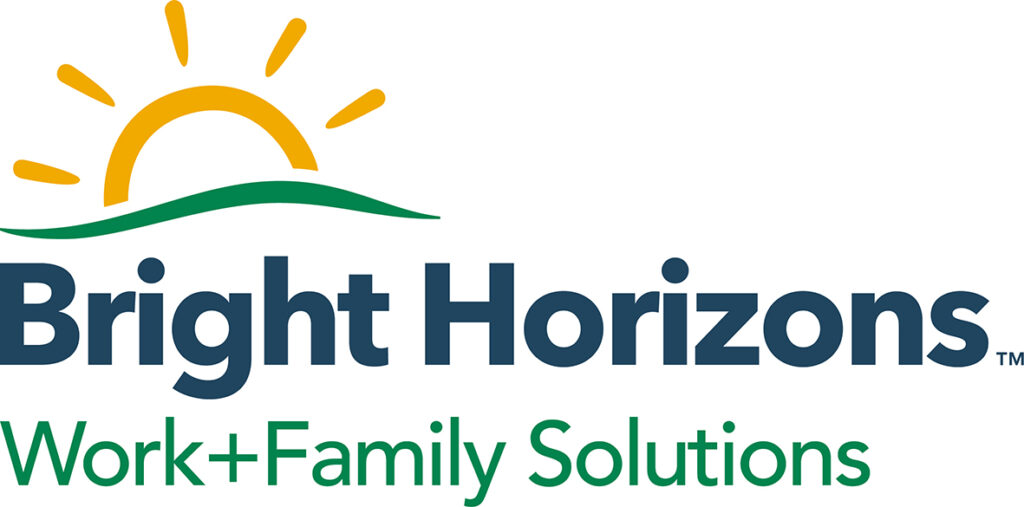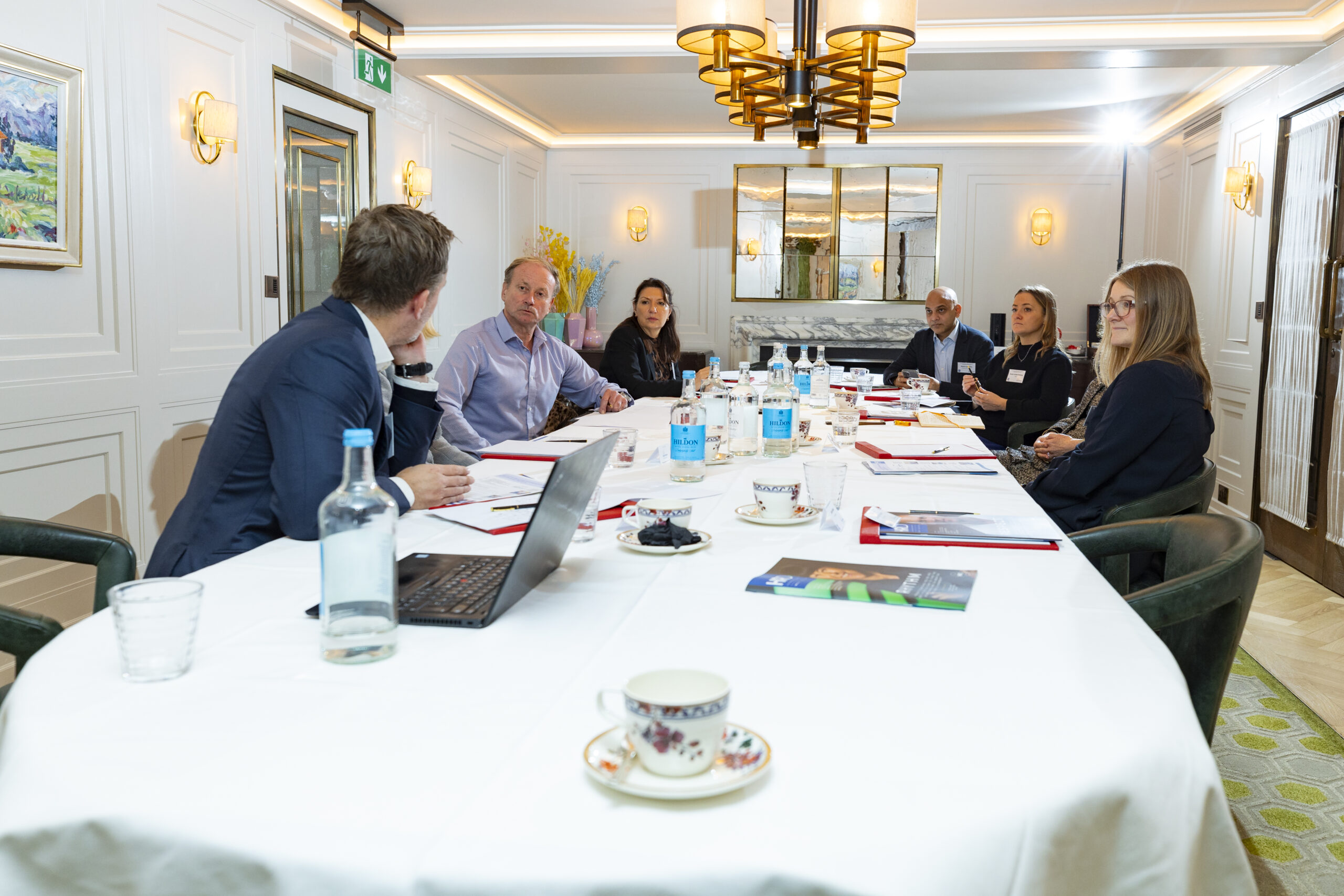
Childcare is one of the keys to labour market participation, with better access to quality, affordable childcare potentially solving some of the challenges of the skills deficit. In recent times, parents have not been well supported and, for too many women, a career break to start a family is a career ender. But with childcare being officially recognised as a major building block in workforce participation, what will the coming changes mean for working parents and employers and will that be enough?
Anna Carter – Benefits Lead Europe & Africa – Diageo
Rosie Isobel Hutton – Key Initiatives & DE&I Lead – CBRE
Paul Quartly – Enterprise Sales Lead – Bright Horizons
Judith Hughes – HR Business Partner – Fieldfisher LLP
Jennifer Liston-Smith – Head of Thought Leadership – Bright Horizon
Charlotte Sword – Global Head of HR – Foster + Partners
Kevin Coutinho – Equality Practitioner & Catalyst For Change – Salvatorian College

HOW WOULD YOU DESCRIBE YOUR CURRENT STRATEGY FOR ATTRACTING AND RETAINING WORKING PARENTS AND CARERS?
Charlotte Sword: We looked at shared parental leave and we made sure that was equalised, in terms of whether it was the father or mother taking that leave. In addition to that, in order to help level the playing field between the genders, we introduced a month paid paternity leave, to encourage the non primary care giver to be active in the beginning and we also make sure that we signpost and role-model part-time working between genders. The communications process was key and we included our diversity champions.
Kevin Coutinho: There’s a real distinction between parenting and caring – parenting is generally perceived as a positive and joyous life experience – whereas caring almost feels like a duty that isn’t talked about. It can be challenging for carers and so organisations need to take a different approach to both. Meanwhile, the issue of shared parental leave is that it has the worst policy take-ups, because it’s just so very complex and difficult to navigate and has been a missed opportunity, because it really doesn’t seem to alleviate or encourage people to share parenting effectively. Flexible, agile and timeliness matter and line managers are key.
Rosie Isobel Hutton: Our strategy focuses on attracting and retaining and making sure that we don’t exclude anyone who is a parent or carer, through supporting and signposting the resources within our employee assistance programme. We’re covering parenting from different perspectives – not limiting ourselves to that traditional family unit – and our family network supports the needs of single parents, people who are co-parenting or leaving or returning from periods of absence and LGBTQ+ parenting and this is extended to carers too. We’re constantly educating and challenging ourselves to be better.
Jennifer Liston-Smith: There comes a time when the conversation as to whether parents and carers should be one of the protected characteristics under the Equality Act comes up. That doesn’t tend to gain traction, but it is absolutely part of the DEIB space. On shared parental leave, our research showed that if you want shared parental leave to work, you need to: enhance the paid leave for struggling parents, role model within the organisation – people who can demonstrate that it hasn’t derailed their career – and have a really informed HR team. For the many parents and carers who work with us, we offer a generous salary sacrifice scheme for employees’ childcare – because salary sacrifice still exists for workplace nurseries – and flexibility.
Anna Carter: We have policies and guidelines that support families – for example family forming and fertility support – and our family leave is 26 weeks full pay for mothers and fathers and a flex philosophy, to support people to deliver their work in a way that works for them. We’re looking now at how we can support carers – not just for that day of crisis – but also medium to long-term caring needs.
Judith Hughes: We offer lots of benefits and support to parents and carers, along with generous family leave policies. Outside of these, we also offer paid Carers and Dependants Leave for up to f ive days per year to cover emergency situations. We are also part of My Family Care, through Bright Horizons, where the f irm will pay for up to six emergency care sessions per year. We very much emphasise that these are for carers and parents, but I think the invisibility of carers is an issue, as it doesn’t start with someone announcing they’re pregnant, a joyous event that colleagues celebrate. T here’s no becoming a carer gift!
Paul Quartly: Organisations with a grip on this are the ones that think about it in terms of culture, policy and practical support. But I think we probably have to be used to the idea that employers are being expected to do more and this can be a challenge in a tough economy. There can be difficulties in gaining decision maker approval, when there are so many competing priorities and even pushback from people in the business who don’t have children and are not carers. But if you don’t support parents and carers well, they will leave and that has all sorts of implications, such as the ratio of women in senior leadership roles and the skills deficit.
Kevin Coutinho: Interestingly, some of the pushbacks have been from women, who have been working parents, who perhaps didn’t have the same level of support in the past. The way to overcome this is in communication, allyship and keeping sights on the bigger picture.

WHAT WOULD YOU SAY ARE THE PINCH POINTS WHERE TALENT IS LOST, OR CAREER PROGRESS IS COMPROMISED BY PARENT AND CARER STATUS AND RESPONSIBILITIES?
Rosie Isobel Hutton: A key pinch point of course is returning and reintegrating back into the workplace, because parenting doesn’t stop there. So, sustainability will be an issue, not necessarily just from a retention perspective, but in terms of people’s productivity, happiness & wellbeing and the extent to which they are wanting to progress or develop in their careers.
Charlotte Sword: Another pinch point we need to be aware of is the cost-of-living crisis. Whether you’re a young person starting a family, with student debt and high rent, or a middle-aged carer – the squeezed middle – the pressures are real and people are struggling.
Jennifer Liston-Smith: The challenges are clear and the pinch points are at every stage, because parent or carer, the responsibility is ongoing and situations change – when children start school for example – and suddenly there is a six week summer holiday to consider.
Anna Carter: As a society, we’re not actively supporting parents to be working parents and encouraging people to have children. We need people to have children because we have an ageing workforce and, at the other end, the caring problem is worsening. These elements are out of employers’ control, but our people look to us to help them, because the state and the systems are not.
Rosie Isobel Hutton: Looking at it from the perspective of losing talent, for some returners, they want to make up for lost time and that has its consequences. There are others who feel guilty about putting work over parenting and the impact that has on people in terms of confidence and how they perceive themselves in the workplace, is palpable.
Judith Hughes: A key challenge has to be retention, insomuch as, we do not want people to feel that their career trajectory is linear and we need to accept that some may want to remain and continue to contribute at a particular level for a while, before considering their next step.
Paul Quartly: Pinch points are often around transitions when working responsibilities rub up against family or care duties. Historically, employers saw this as a matter for the state or the individual to address, but it’s changed. T here is a really important role for employers here, because as almost all businesses are experiencing, the talent and skills drought is impacting competitiveness.

THE BURNING QUESTION IS, WHY HASN’T HYBRID WORKING FIXED THE CHILDCARE PROBLEM?
Jennifer Liston-Smith: Hybrid isn’t a panacea for working parents, although it has helped, where high trust employers offer flexible working and parents can organise time around the school pickup. But our research revealed that 60 percent of men and 56 percent of women admit that they find it difficult to look after children, whilst trying to work from home and it reduces their productivity, so care is still needed.
Anna Carter: Indeed, parents and carers can be well organised and then just one thing in the day goes wrong and it becomes too hard to cope with. That’s when people start to think, “is this worth it?” and they give up their career.
Charlotte Sword: It does tend to be the emergencies that employers do well in. Rather, it’s support around the day-to day routine that requires more attention.

REALISTICALLY, HOW MUCH OF A GENDER ISSUE IS PARENTING AND CARING, IN TERMS OF JUGGLING WITH WORK RESPONSIBILITIES?
Kevin Coutinho: The evidence is that disproportionately, it is women that bear the greatest responsibility and that is why it is a gender equality issue. If we don’t look at caring and parenting as part of DEI work, we are missing a significant area and risk reinforcing gender stereotyping.
Rosie Isobel Hutton: Societally, culturally and biologically, women are considered the carers and so employers are really challenged to bring balance, equality and inclusion into the work dynamic. But retaining and attracting talent and skills is a viable focus, to sustain the commitment to keep parents and carers supported and engaged in the business.
Kevin Coutinho: Stereotyping needs to be understood, gauged and challenged and there are definitely tools and indicators that can help identify and correct where it may be exist.
Anna Carter: We also need to be mindful of changing social dynamics – in a few years from now, more people will be carers than looking after children. That’s a statistic that is likely cause alarm, because the people in the frame are going to be more senior, in both experience and job position.

IN TERMS OF PARENT AND CARER SUPPORT, WHAT HAVE YOU TRIED THAT HAS BEEN SUCCESSFUL AND HOW HAVE YOU MEASURED IT?
Rosie Isobel Hutton: We track the progress of how the measures we’ve introduced are impacting retention and engagement – looking at that through a gendered lens as opposed to parent/carer – particularly in relation to some of the diversity and inclusion issues. We look at membership numbers on our family networks and attendance at events and other observations throughout the year, to see how many people are engaging.
Anna Carter: I think there’s lots of good intention to measure, but access to good data – and having the time and capacity to really dig into it and find something tangible – is a challenge.
Judith Hughes: It is quite difficult to measure the success of specific initiatives – you may not know exactly which particular measure caused the improvement – and it was probably a combination of everything. You also may not see the benefits of any new initiatives until a few years later.
Kevin Coutinho: We have lots of data, for all protected identity, contract types and working patterns. The thing that we’re looking at particularly around parents and carers, tends to be localised and requiring a mix of quant and qual information, to understand what is happening. It’s a bit like Goldilocks and the porridge, you’re testing and trying to f ind the right initiatives, systems and processes to introduce into an organisational culture that are durable and can stand the test of time.
Charlotte Sword: We interrogate data from onboarding, engagement and exit interviews, trying to bring all of that information together and then trying to see whether we can cut the data in various ways to really inform.
Paul Quartly: It can be difficult to prove causation because some of the impacts are felt longer-term. To keep it simple, one of our NHS Trust clients simply noted the £2m saved in productivity with back-up care.
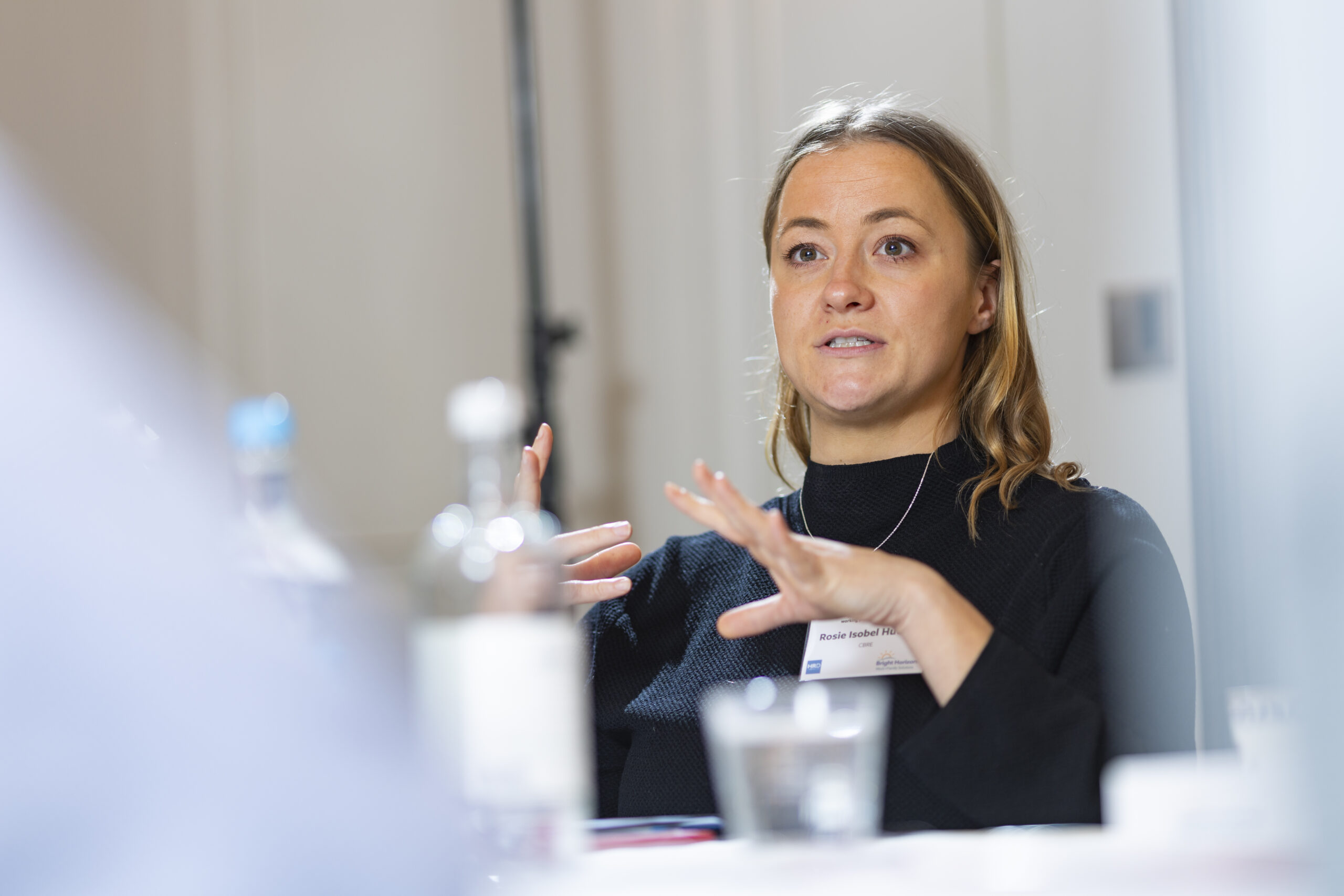
WHAT DO YOU THINK MAKES THE DIFFERENCE BETWEEN SUCCESS AND FAILURE, WHEN PARENTS AND CARERS RETURN FROM EXTENDED LEAVE?
Jennifer Liston-Smith: Having the right support in place and that’s where parental leave programmes come in, along with coaching, online toolkits, best practice workshops and access to childcare. This is a proven way to increase maternity return rates by approximately 12 to 14 percentage points over just a few years. As an example, organisations see an increased return rate from say 77 percent to 90 percent. The resulting savings and reduced turnover costs are significant. For the coaching element, it is not so much focused on being a parent, it’s about helping those parents keep their career on track, while achieving balance at home. This is backed up with an online coaching app which has six success factors that we’ve identified, which will make that transition more sustainable. We ask people to rate them before coaching and after coaching. In last year’s figures, we saw: Clarity of plans for the future (43 percent improvement); ability to have influential conversations with stakeholders (47 percent improvement); confidence in integrating parenthood and career (55 percent improvement); practical knowledge and skills relevant to the transition (46 percent improvement) and feeling valued and supported by the employer (22 percent improvement), as they already feel valued by having the programme!

DO YOU PROVIDE SUPPORT WITH CHILDCARE OR ELDER CARE? IF SO, IS IT AD HOC, GAP COVER OR ONGOING REGULAR CARE?
Anna Carter: From a childcare provision point of view, in the UK for example we have people who are on the legacy Childcare Voucher scheme and we actively try and promote the tax-free childcare. In the UK too, we have looked at partnerships, but the reality is, we have people in other countries, which is a challenge.
Jennifer Liston-Smith: We have a platform called the Work+Family Space which has a range of offerings. It’s where people access and book their backup care and their coaching. It also includes our “speak to an expert” service and our team provides specialist support for parents and carers on an advisory level. Of course we provide lots of ongoing childcare too.
Charlotte Sword: Our parents and carers group are talking about the 30 hours of funding and saying that will definitely help them navigate some of the cost issues.
Paul Quartly: A word of caution, as the addition of 30 hours funding may exacerbate issues within the market, because the way that it’s funded to the nurseries is through local authorities. My concern is about capacity and there’s an issue around how it’s presented as ‘free’ hours, because it’s not free, it’s ‘funded’ and it’s only for a certain number of weeks a year. My worry is that it assumes there is no longer a problem, but there may be some consequences around the amount of provision in the marketplace, with some smaller providers unable to provide these hours, because they just won’t be able to afford to.
Jennifer Liston-Smith: Nesta, the innovation organisation recently calculated that there would need to be – at a modest estimate – 27,500 new workers in the childcare sector to meet the expected demand. Some smaller providers have closed because of the cost-of-living crisis and immense cost pressures for childcare providers. One positive is funding for care from nine months as it’s been noted that people end up with a career break if the care isn’t there. With the three to four year-old funded places only, many people were taking time out of work then trying desperately to re-integrate into work.
Charlotte Sword: I was very excited at the beginning of the year when we found out about salary sacrifice and then partnering with an organisation that had a network of nurseries. Then that was followed by disappointment, that we couldn’t use salary sacrifice, because of HMRC restrictions.

DO YOU CONSIDER THAT DIFFERENT GENDERS REQUIRE DIFFERENT PROVISION AND SUPPORT AS PARENTS OR CARERS?
Kevin Coutinho: The question is, does the provision need to be gender differentiated? I’d probably argue not. Now the challenge is the decision-making power still sitting with white men from particular socio-economic backgrounds, who are not the usual profile that will understand the need.
Charlotte Sword: What we want as a business is to retain our women who are leaving, so we want to support equity in opportunity and keep that talent.
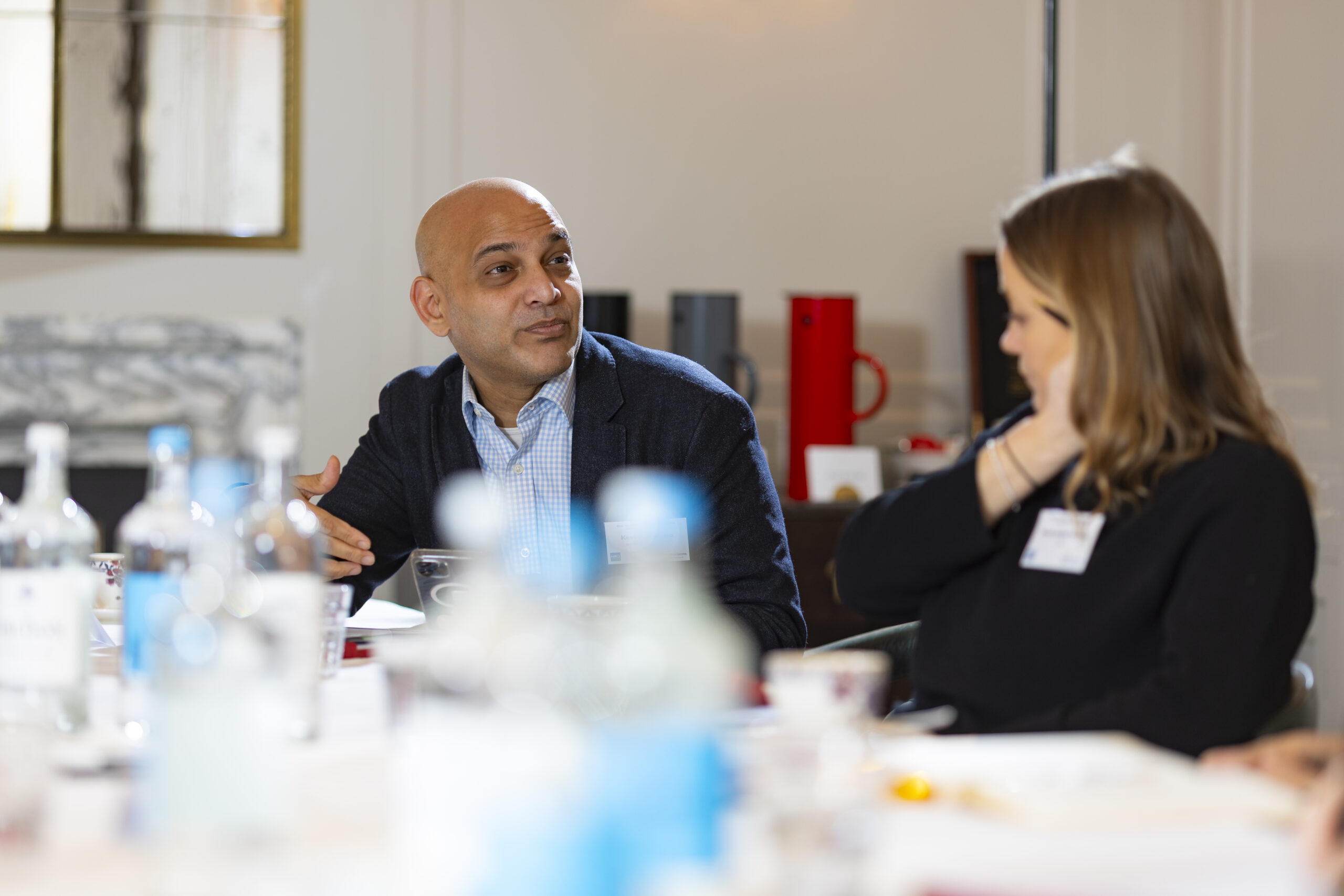
IS THERE STILL A TABOO AROUND MEN ACCESSING FAMILY SUPPORTS?
Jennifer Liston-Smith: Our perception would be that if you put childcare support in place, it may well be disproportionately accessed by women initially. The men who access it will be the men in the vanguard of challenging the gender stereotypes. You probably want more of them high up in the organisation, because they are going to level the playing field.
Judith Hughes: We want to challenge the idea that women do the childcare and have the main parental responsibility. I think there is a societal expectation and for me that is a challenge. It’s not only a problem for mums, but for dads too and of course any same sex couples who have children or single parents.
Rosie Isobel Hutton: I wonder if you can think about some of the provision and support in the context of what the role that person is taking, rather than what gender that person is?
Jennifer Liston-Smith: Looking at the role rather than the gender is an area we have led on – instead of having maternity coaching and paternity coaching, we’ve had coaching for long leave and coaching for short leave, because you could be a woman in a same-sex couple taking two weeks. Your experience will be more similar to a group of dads in male-female couples, who are coming back.
Charlotte Sword: I absolutely take on board the diversity in parenting, but the majority are younger women, who are just asking for a little bit of help at that particular point. I don’t think that is too much to ask.
Paul Quartly: It could be argued that women in the workplace specifically have been disadvantaged by the differences between maternity and paternity leave. The system was well-intentioned, but the direct consequence of maternity leave is poor outcomes in terms of representation. Rather than maternity leave, it should be parental leave.
Jennifer Liston-Smith: In our Modern Families Index research, there’s a question we ask: “Have you had to miss work due to a breakdown in childcare?” 76 percent said, “yes, I did” – of that, 77 percent were women and 75 percent were men.
Judith Hughes: I concur, in terms of the uptake of our carer and dependents leave, just as many men take this up as women.
Rosie Isobel Hutton: That suggests that we shouldn’t make assumptions, as it varies so much, depending on so many different factors.
Kevin Coutinho: Caveat that possibly with what is the probability of a woman being a carer and what’s the probability of a man being a carer? Once you are carers, the impact of caring is likely to be similar, in terms of how it impacts on your work life.
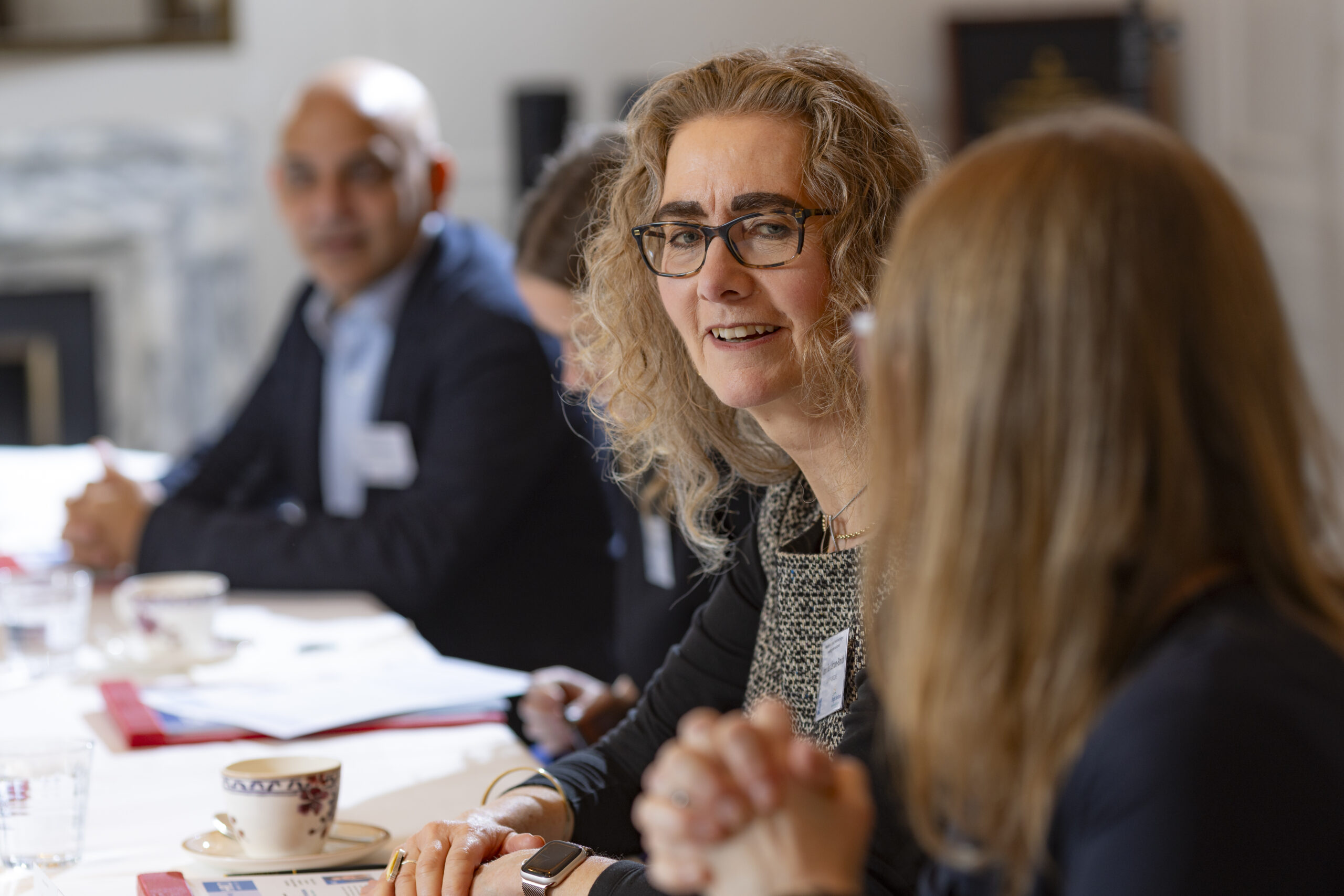
WHAT REALLY EMPOWERS PARENTS AND CARERS AND HELPS THEM TO TAKE GREATER CONTROL OF THEIR WORK/LIFE?
Anna Carter: An important element is giving people a voice and having open conversations, encouraging conversations and enabling people to talk openly. Once people feel that they can talk about something with confidence, then you can gain a true understanding and find solutions and support initiatives.
Kevin Coutinho: Agreed, but I’d add that parents are much more established and defined than carers, who are still in the recognition phase. The challenge about becoming a carer is that it’s spontaneous, random and largely unplanned and not as clearly defined in policy and law.
Judith Hughes: I concur that having a voice is key, as is seeing carers and parents as distinctly different profiles. I also think that flexibility is so important.
Rosie Isobel Hutton: In the corporate environment, there has been an expectation of presenting a professional, perfect version of yourself. The COVID period saw people open up, be empathetic – as well as candid and genuine connections – and greater understanding resulted. People sharing aspects of their caring/parenting that might impact them in the workplace and enabling managers to find solutions, supports greater engagement and productivity.
Jennifer Liston-Smith: The culture piece is indispensable and the practical services are going to add another layer of confidence in the employee’s perception of their employer really caring. Behind that is the importance of data and intelligence.

WHAT ARE DECISION-MAKERS LOOKING FOR IN YOUR ORGANISATIONS THAT DEMONSTRATES ROI?
Kevin Coutinho: Representation is an important indicator for funding, because external drivers through UKRI or other funding bodies, have certain expectations. But it’s important that all work around DEI is not about ROI, funding or winning an award, it’s so much more than that.
Anna Carter: Agreed, it’s important from a cultural perspective and that it’s the right thing to do. That really is the driving force, because a really strong culture and engaged workforce is a good foundation on which to build.
Charlotte Sword: Every board will want to see ROI – whether that is retaining talent or increased engagement. Inevitably, there will be some elements that they will question, but that’s just checks and measures.
Jennifer Liston-Smith: An important aspect is the mutual benefit of supporting career continuity and keeping skills in the organisation. The other lens here is the multi-generational workforce, attracting new talent, as well as wanting to reattract older workers who may have left. Carer support often comes in for over 55s, although the responsibilities of caring can of course apply to people of any age. The expectations of the younger workforce are very different to those of previous generations. Many employers are motivated by pulse surveys or focus groups, concerning how they are perceived by younger workers in the talent marketplace. But across the demographic, there is a wealth of potential, it is talent that needs supporting at key times – such as caring and parenting – and this is the talent that businesses across sectors are vying for.
Paul Quartly: We need to keep it as simple as possible – policy, cultural work and practical support – and we need to work to keep it on the agenda, particularly as there are so many competing priorities. In terms of ROI, the strongest indicators are that if you provide an effective and sustainable platform of support and benefits for parents and carers, it really does positively affect attraction, retention, wellbeing and productivity.
Kevin Coutinho: We have to make inclusivity a central tenet, recognising that it’s a complex population, not a binary or homogenous one. Organisations and sectors are at different stages, as is society in our understanding of the more nuanced aspects of caring and parenting.
Anna Carter: It’s also important to put policies in place for everyone and make people mindful that, even though they are not benefiting at the moment, that everyone at some point in their life will need support and that it is there. As for the positives that this can bring business, it’s not about quick gains, it’s about demonstrating that being an organisation that cares will reap the benefits, in terms of engagement and retention.
Jennifer Liston-Smith: Claudia Goldin, a recent Nobel Prize winner in the field of economics, identified that the gender pay gap is not so much to do with women’s choices of careers, but exactly occurs at the moment of having a child and the gap never recovers. So it is about childcare being a key part of the infrastructure and a key enabler in labour market participation. If you need to demonstrate an ROI, the bottom line is that the people we employ have lives outside of work and family that they care for and who care for them. These are not two separate people, they are one and the same and, on life’s journey, all of us will experience times when we need support and it is a privileged position to be in as an employer, that there are some great initiatives to offer employees, which can make a huge difference to their situation and life’s challenges. In turn, providing support at these ‘moments that matter’ has proven impacts on their loyalty, engagement and productivity – as well as, of course, their wellbeing. That to me is the most compelling bottom line of all.

FOR FURTHER INFO SOLUTIONS.BRIGHTHORIZONS.CO.UK
